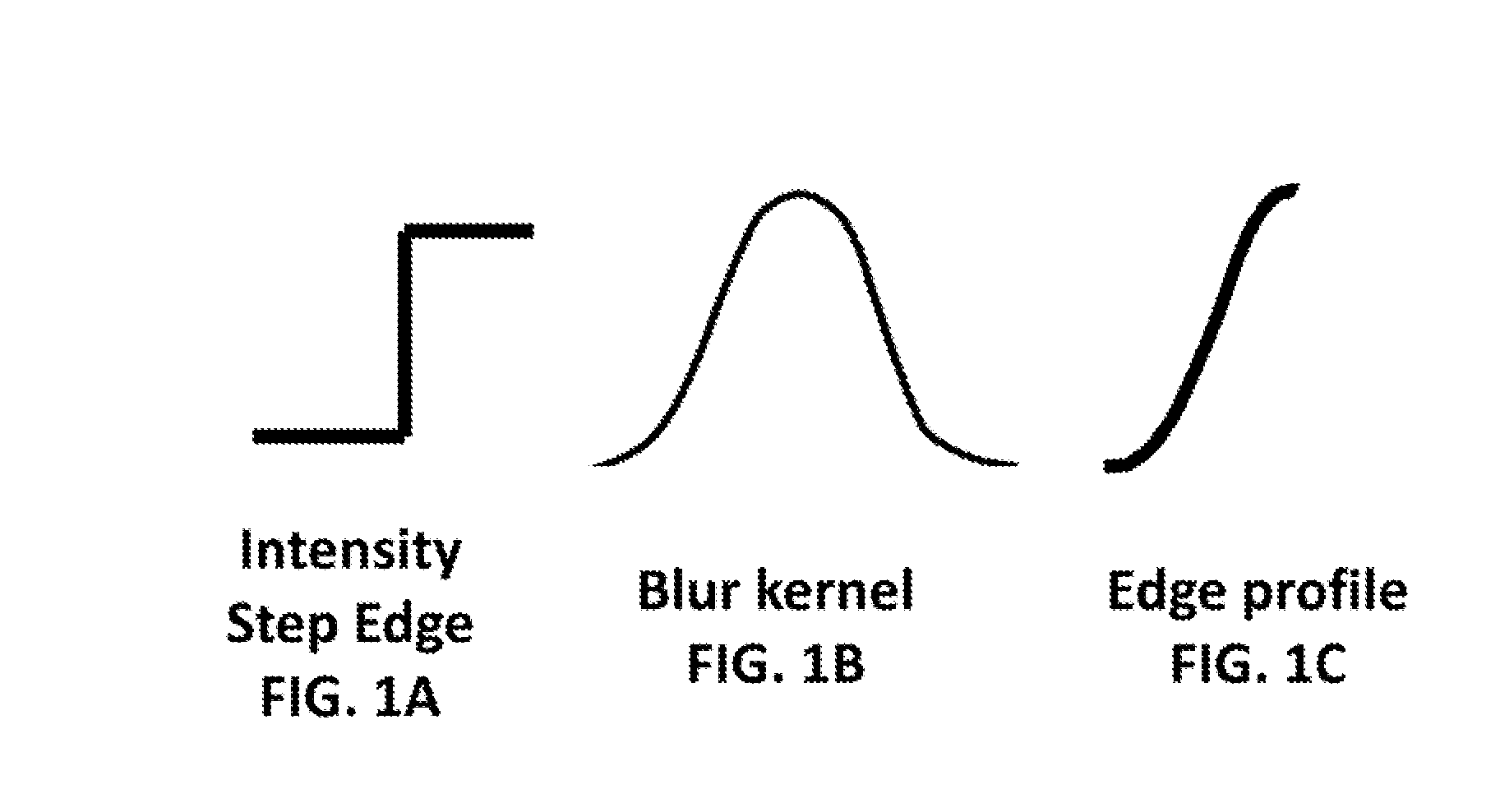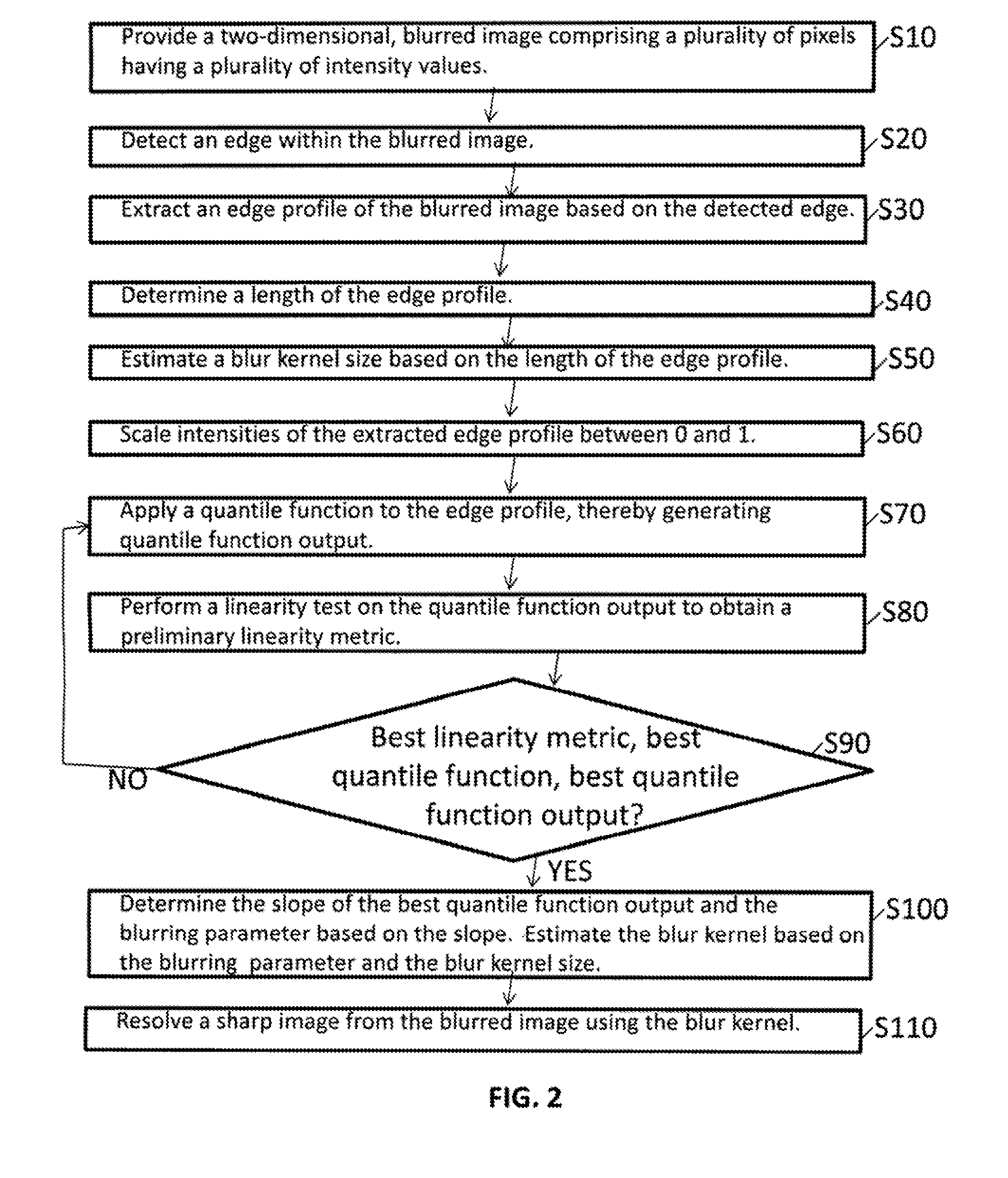Method of estimating blur kernel from edge profiles in a blurry image
a blurry image and edge profile technology, applied in image enhancement, image analysis, instruments, etc., can solve the problems of ill-posed problems, blurry and noisy imagery is a ubiquitous problem, and solving sharp images is one of the most computationally demanding methods
- Summary
- Abstract
- Description
- Claims
- Application Information
AI Technical Summary
Benefits of technology
Problems solved by technology
Method used
Image
Examples
Embodiment Construction
[0023]For edification purposes, it will be helpful to explain the statistical methods to be applied in one or more embodiments of the instant invention to the problem of estimating a blur kernel. These statistical methods are based on the relationships between probability density functions, cumulative distribution functions, and quantile functions. The edge intensity profile is equivalent to the cumulative distribution function. The first step is to determine the statistical model that best fits the data. Probability plot correlation coefficient (“PPCC”) plots allow one to select the blurring functional form that best matches the files of the blurred edges in the image. Given the functional form, the next step is to determine the governing parameters. The slope and intersection of a linear least squares (“LS”) fit to the quantile function values in a probability plot determines the parameters without necessitating a search the parameter space. The slope and the intersection of the L...
PUM
 Login to View More
Login to View More Abstract
Description
Claims
Application Information
 Login to View More
Login to View More - R&D
- Intellectual Property
- Life Sciences
- Materials
- Tech Scout
- Unparalleled Data Quality
- Higher Quality Content
- 60% Fewer Hallucinations
Browse by: Latest US Patents, China's latest patents, Technical Efficacy Thesaurus, Application Domain, Technology Topic, Popular Technical Reports.
© 2025 PatSnap. All rights reserved.Legal|Privacy policy|Modern Slavery Act Transparency Statement|Sitemap|About US| Contact US: help@patsnap.com



